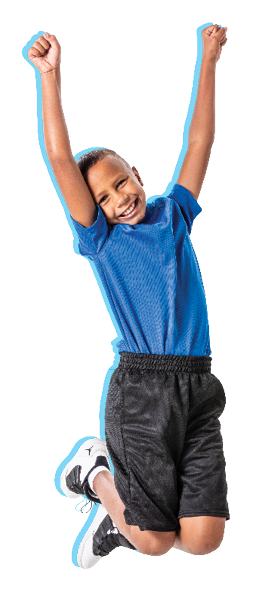How am I doing? Sometimes we get so accustomed to other people evaluating and assessing our performance that we forget to stop and ask ourselves this very simple, yet profound question. Self-evaluation is a highly authentic form of evaluation because only the person performing knows their true capabilities and effort. Therefore, it makes sense to not rely solely on an outside source when it comes to assessing student performance. In case you’re wondering why self-assessment is such an invaluable tool for you to use with your students, here are some examples:
Self-assessment is a powerful tool in sports, play, and active recreation.
Again, only the person performing knows their true capabilities and the actual amount of effort they exerted while participating in an activity. When your students self-assess, they are forced to look within and ask themselves, “Did I perform at my highest level and did I give as much effort as I could have?”
Self-Assessment forces students to take ownership over their performance.
Being able to look at yourself in the mirror and hold you accountable is a priceless life skill we must teach our students. If they performed at their highest level and gave their best effort, they should be proud and own it. If they didn’t, admitting it is the first step.
Self-Assessment enhances honesty.
Honesty starts within and every time you self-assess your students, you’re teaching them to practice being honest with themselves. “To thine own self be true” –Shakespeare
Self-Assessment is a great strategy for monitoring student progress.
If you’re trying to monitor students’ progress, I recommend getting into the habit of documenting their self-assessments. You can have students record their performance and effort results in a journal or on a chart – just find something that is age-appropriate and works for you and your students.
Self-Assessment increases students’ self-awareness.
It’s easy to just go through the motions; however, it takes a concerted level of self-awareness in order to be able to self-assess. As your students continue to consistently self-assess, their self-awareness will increase.
Self-Assessment encourages self-improvement.
Sometimes self-assessing reveals a gap between what your students know and think they’re capable of, and the actual effort and performance they gave. When there is a discrepancy between the two, this encourages self-improvement.
Self-Assessment allows students to embrace humility and foster humbleness.
- Nobody is perfect at everything, and that’s okay!
- Even if you are great at something, there is always room for improvement.
Self-Assessment promotes resilience.
Although students may not be where they want to be after self-assessing (due to various circumstances), they always have the choice and power to build upon where they are, and then elevate themselves even higher. Nothing is more empowering as an educator than inspiring a fierce determination to succeed.
Self-Assessment can be applied to all facets of students’ lives.
As I sit here reflecting, I can’t help but begin to identify other areas of our students’ lives where they, and you, could practice self-assessment: health, self-care, balancing time, managing money, studying/planning, and being active. Can you think of any other areas that could benefit from self-assessment?
So now that we’ve talked about how valuable it is to self-assess, how often should one do it? I would argue that your students should self-assess weekly if you really want to allow time for improvement and help your students stay on track and remain committed.
Ready for a challenge… perhaps somewhat of a New Year’s resolution? I dare you and your students to self-assess and look within, for a little self-constructive criticism builds character. Happy New Year!








